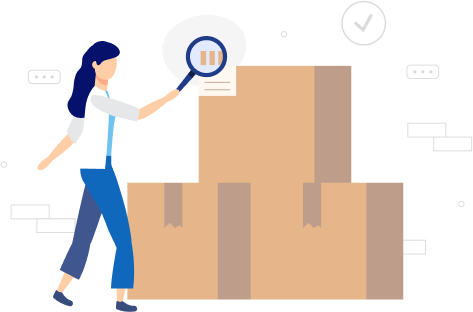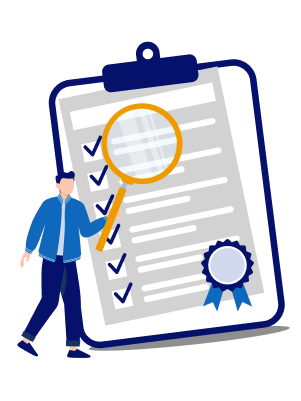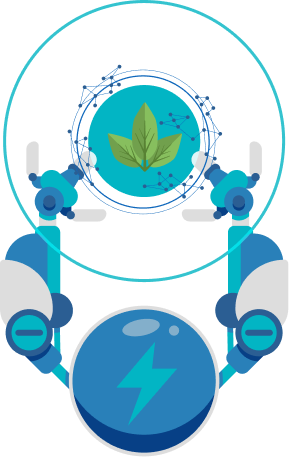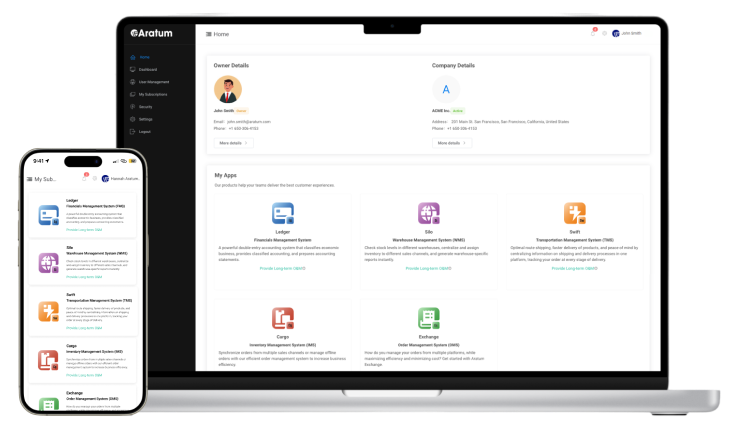Following several global issues such as supply chain disruptions, climate problems, and inflation, we understand your need to control your costs while improving your procurement processes and delivering quality services and products to your customers.
With Aratum’s cloud cost management solutions, your company can adapt to dynamic market conditions, save on operational costs, and improve business profitability.






Cost Visibility
Cost Optimization
Supplier Management
Risk Management
Compliance and Governance
Transparency and Accountability
Technology Integration
Sustainability
Continuous Improvement
Training and Development
Implement cost management tools and processes to track and monitor costs across the supply chain. It includes direct and indirect costs associated with procurement, production, transportation, and inventory management.

Utilize data analytics and optimization techniques to identify cost-saving opportunities. It may involve renegotiating contracts with suppliers, optimizing transportation routes, minimizing inventory holding costs, and reducing waste.

Establish clear selection criteria and regularly evaluate their performance based on cost, quality, reliability, and regulation compliance. Develop strategic partnerships with key suppliers to leverage economies of scale and drive cost efficiencies.

Identify and mitigate risks impacting costs, such as supply chain disruptions, currency fluctuations, geopolitical instability, and regulatory changes. Develop contingency plans to ensure continuity of operations during unforeseen events.

Ensure compliance with relevant regulations and industry standards related to cost management, such as financial reporting requirements, tax regulations, environmental regulations, and labor laws. Implement robust governance mechanisms to monitor compliance and enforce accountability throughout the supply chain.

Gain transparency and accountability by maintaining open communication channels with suppliers, customers, regulators, and internal teams. Establish clear roles and responsibilities for cost management within the organization and hold individuals accountable for meeting targets.

Leverage technology solutions such as supply chain management (SCM) software, enterprise resource planning (ERP) systems, and blockchain technology to streamline cost management processes, improve data accuracy, and enhance collaboration with partners.

Consider cost management decisions' environmental and social impacts, such as carbon emissions, waste generation, and labor practices. Incorporate sustainability criteria into supplier selection processes and seek opportunities to reduce operations' environmental footprint while maintaining cost competitiveness.

Adopt a culture of continuous improvement to drive ongoing cost-reduction initiatives and enhance efficiency throughout the supply chain. Encourage stakeholder feedback and regularly review performance metrics to identify areas for improvement.

Invest in training and development programs to build employees' cost management and governance capabilities. Equip them with the skills and knowledge needed to analyze data effectively, identify opportunities, and implement cost-saving initiatives.

A cost management tool optimizes patient care, supplies, and administrative expenses, ensuring compliance with regulations, patient safety, and ethical standards. It involves implementing cost-effective treatment protocols, negotiating supplier contracts, and maintaining billing transparency while adhering to HIPAA regulations and ensuring high-quality patient care.
Cost management optimizes sourcing, inventory, and operations expenses, while governance ensures compliance with laws and ethical practices. It involves efficient inventory systems, supplier negotiations, and transparent pricing to control costs while upholding standards.
Cost management optimizes expenses across medical research, manufacturing, and distribution, while governance ensures compliance with regulatory standards and ethical practices. This involves efficient production processes, pricing negotiations with suppliers, and transparent supply chain operations to control costs while maintaining product quality and safety.
In e-commerce, cost management optimizes website development, marketing, and fulfillment expenses, while governance ensures compliance with laws and regulations. It involves efficient storefronts, data-driven marketing, and transparent transactions to control costs while upholding legal and ethical standards.
Cost management optimizes freight, fuel, and fleet expenses in transportation and logistics while governance ensures regulatory compliance. It involves efficient routing, carrier contracts, and transparent operations to control costs and uphold safety standards.
Cost management optimizes expenses for temperature-controlled storage and transportation of perishable goods while governance ensures compliance with food safety regulations. It involves efficient storage facilities, route optimization to reduce energy costs, and transparent monitoring to maintain product integrity and regulatory compliance.
In finance, cost management optimizes expenses while governance ensures compliance. It involves efficient processes, negotiations, and transparent reporting to control costs, mitigate risks, and uphold standards.
In government, cost management involves efficient budgeting, expenditure monitoring, and transparent operations to control costs while maintaining public trust and meeting governmental obligations under laws and regulations.
Cost management optimizes production, labor, and supply chain expenses while governance ensures compliance with quality standards and regulations. It involves efficient processes, supplier negotiations, and transparent operations to control costs while upholding quality and compliance.
In cybersecurity, cost management involves cost-effective security measures, risk assessments, and transparent practices to control costs while upholding regulatory compliance and safeguarding sensitive information.
Cost management optimizes hazardous material expenses, while governance ensures regulatory compliance. It involves safety protocols, specialized equipment, and transparent procedures to meet standards while managing costs.

More Profit
A Taiwanese courier service faced challenges from supply chain disruptions and global inflation. With increased business operational expenditures, the company struggled to balance those realities with their costing and risk mitigation while ensuring timely shipment deliveries and competitive pricing.
Because of these cost management problems, the courier sought our solutions.
Cost management is the process of planning, controlling, and optimizing expenses within an organization to achieve its financial goals and objectives effectively.
Governance in cost management refers to establishing policies, procedures, and controls to ensure compliance with regulations, ethical standards, and organizational objectives. It involves overseeing cost-related activities and ensuring accountability and transparency in decision-making processes.
Cost management and governance help businesses optimize resources, improve operational efficiency, enhance profitability, and maintain financial stability. They also help organizations adapt to changing market conditions and mitigate risks effectively.
Cost management in supply chains involves optimizing procurement, production, transportation, and inventory expenses to enhance efficiency and profitability.
Governance in supply chains ensures compliance with regulations, ethical standards, and contractual agreements while promoting transparency, accountability, and risk management practices to support practical cost management efforts.
Some potential challenges associated with cost management include inaccurate cost estimation, lack of visibility into cost drivers, resistance to cost reduction efforts, and difficulty balancing cost control with quality and innovation.
Businesses can measure the effectiveness of their cost management efforts by tracking key performance indicators such as cost-to-income ratio, return on investment, cost variance analysis, and customer satisfaction levels. They can also conduct regular audits and reviews to evaluate the efficiency of cost management practices.
Businesses can optimize transportation costs in supply chains by implementing route optimization, consolidating shipments, leveraging transportation management systems, and negotiating favorable contracts with carriers. Cloud cost management and governance services can headstart businesses to achieve their desired optimization.
Inventory management plays a critical role in cost management in supply chains by minimizing holding costs, reducing stockouts, and optimizing order quantities to effectively balance inventory levels with demand.
Cost management solutions such as strategic sourcing, supplier consolidation, volume discounts, and contract negotiations help businesses achieve favorable pricing terms and optimize procurement processes.
Businesses can ensure transparency and accountability by maintaining accurate records, conducting regular audits, and fostering open communication with stakeholders to promote visibility and trust in cost-related activities. They can also apply AI and machine learning for more intelligent decision-making throughout the supply chain.

To implement efficient costing in your supply chain, you can rely on Aratum’s cost management and governance tools to help you get started and gain business visibility, efficiency, and resiliency.
Aratum is a globally recognized software provider specializing in developing supply chain management solutions. Our software solutions incorporate advanced algorithms and optimized data structures to facilitate efficient data processing and information dissemination across organizations.
Leveraging cutting-edge technologies such as machine learning and artificial intelligence, the software enables automated decision-making and real-time analytics, enhancing supply chain visibility and improving overall performance.
With a focus on delivering robust and scalable solutions, Aratum is committed to providing our clients with the tools necessary to optimize their supply chain operations and gain a competitive edge in their respective markets.












© 2024 Aratum or an Aratum affiliate company. All rights reserved. No part of this publication may be reproduced or transmitted in any form or for any purpose without the express permission of Aratum or an Aratum affiliate company. The information contained herein may be changed without prior notice. Some software products marketed by Aratum and its distributors contain proprietary software components of other software vendors. National product specifications may vary. These materials are provided by Aratum or an Aratum affiliate company for informational purposes only, without representation or warranty of any kind, and Aratum or its affiliated companies shall not be liable for errors or omissions with respect to the materials. The only warranties for Aratum or Aratum affiliate company products and services are those that are set forth in the express warranty statements accompanying such products and services, if any. Nothing herein should be construed as constituting an additional warranty. In particular, Aratum or its affiliated companies have no obligation to pursue any course of business outlined in this document or any related presentation, or to develop or release any functionality mentioned therein. This document, or any related presentation, and Aratum’s or its affiliated companies’ strategy and possible future developments, products, and/or platforms, directions, and functionality are all subject to change and may be changed by Aratum or its affiliated companies at any time for any reason without notice. The information in this document is not a commitment, promise, or legal obligation to deliver any material, code, or functionality. All forward-looking statements are subject to various risks and uncertainties that could cause actual results to differ materially from expectations. Readers are cautioned not to place undue reliance on these forward-looking statements, and they should not be relied upon in making purchasing decisions. Aratum and other Aratum products and services mentioned herein as well as their respective logos are trademarks or registered trademarks of Aratum (or an Aratum affiliate company) globally. All other product and service names mentioned are the trademarks of their respective companies. See aratum.com for additional trademark information and notices.